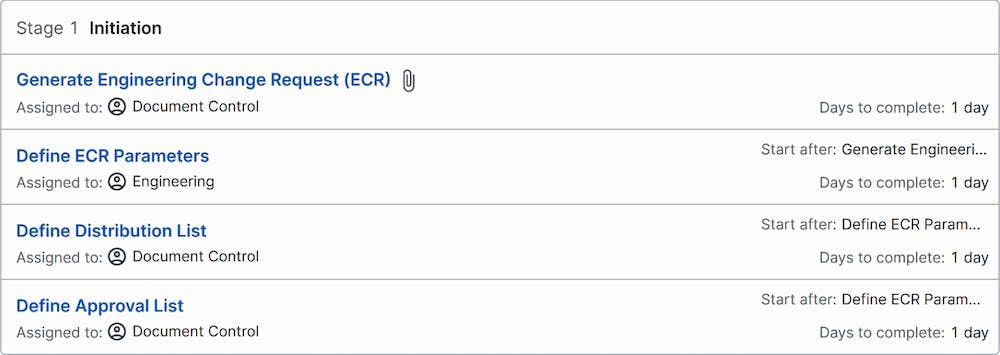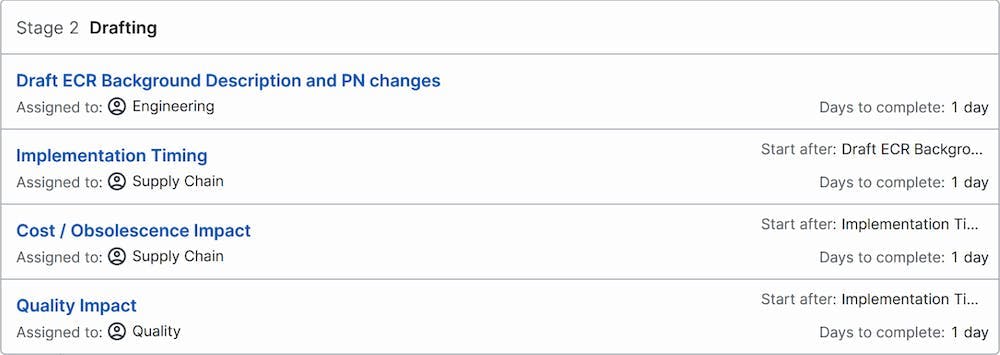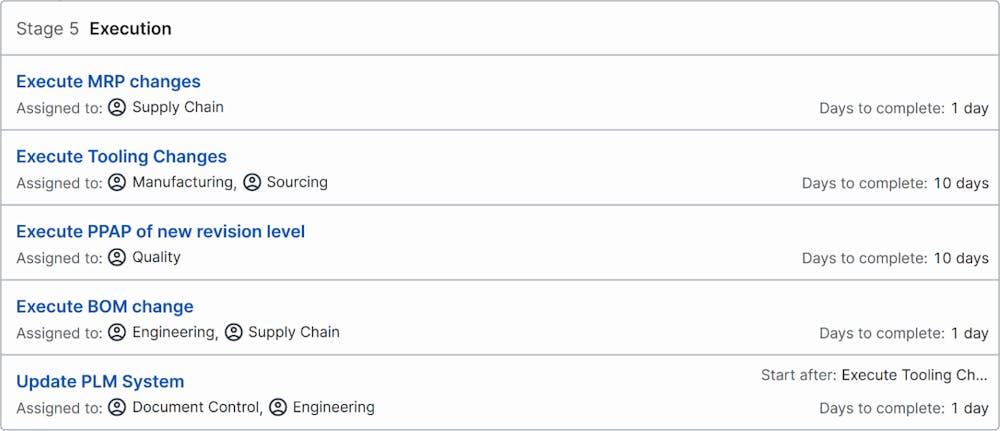Engineering Change Order (ECO)
In order to effectively document and control product design changes, large and small companies alike need a well-defined and comprehensive Change Management system. The Engineering Change Order (ECO) process is an essential part of a Change Management system. The enclosed process outlines a typical Product Engineering Change Request/Order. This process can be commonly found in any manufacturing company across many industries: Automotive, Consumer Goods, Medical Equipment, Food and Beverage, Construction, etc. Without this process, a product design will tend to incur many unnecessary changes (and reversals), and traceability of these changes and the reasons for making them gets easily lost to ‘tribal knowledge’ within the Engineering Department.
STAGES

The following stages are identified in the blueprint:
Initiation
Kickoff and definition of basic parameters which may define the workflow details.
Drafting
Detailed inputs that provide the information necessary to communicate the Change and the expected impacts thereafter.
Approval Routing
Gathering Approvals from all stakeholders, then archiving the ECR record.
Distribution
Distribution of the ECO to all parties required to execute the Change.
Execution
Implementation of Changes as defined by the ECO.
WHY USE THIS PROCESS
The ECO process is critical in documenting changes to a product and/or manufacturing process. Complete and accurate documentation is important both for transparency to key business stakeholders and for posterity. For instance, if a product is involved in a legal dispute (e.g. consumer product safety event), any changes to safety devices will come to light in discovery, so documentation of proper validation of these changes is critical to defending these decisions. Having traceability of changes that impact product Cost and Quality can be very useful as well. The ECO process is most often managed by a Document Control department, but smaller companies may choose to manage this using their Engineering Department.
The ECO process should be tremendously important to a company’s leadership because it serves as a gate to prevent unnecessary or counterproductive specification changes. Also, it creates an Historical record for when and why spec changes occur, and Accountability across the organization by communicating in a standardized manner.
WHO SHOULD USE THIS PROCESS
Change Management is essential to any Industry wherein product or service requirements are communicated from one party to another and are subject to revision. Manufacturing and Construction companies are the most common users of such a process, it is very unusual to see a company in either industry without a revision-control process in place. Larger companies benefit from automating some of the workflows and pre-definitions, but the main benefit can be achieved with signed paper approvals and notifications. So, small and medium sized companies can easily implement this process with little/no upfront costs.




